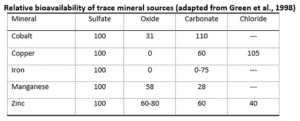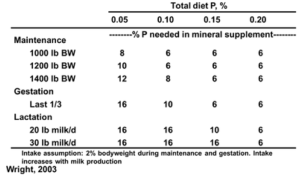COW HERD MANAGEMENT
- For spring-calving cow herds:
- Monitor BCS relative to feed/forage availability.
- Formulate your plan if you anticipate early-weaning or supplementing on grass.
- Schedule early pregnancy checking activities with your vet if not already done.
- For late-summer and early-fall calving cow herds:
- Ensure mature cows are ≥ 5.0 and 2-4 year old females are ≥ 6.0 at calving.
- Review your calving health protocols as needed.
- For free-choice salt and mineral programs:
- Record date and amount of product offered, calculate herd or pasture consumption.
- Adjust how you are offering product to cattle if they over- or under-consume.
- If consumption is 2X the target intake, then cost will be too!
- Properly store bags and pallets to avoid damage and product loss.
- For bulls at the start of the breeding season:
- Watch for injury so you can intervene and treat bulls promptly if needed.
- Ensure they are aggressively covering cows.
- Monitor BCS, particularly on young bulls.
- If pulling bulls from cows to manage the length of the breeding season, schedule those dates and have them on the calendar in advance.
CALF MANAGEMENT
- If considering creep feeding calves, make sure you understand what your objective is by doing so and calculate the value of gain relative to cost of gain.
- Monitor calves for summer respiratory illness.
- Schedule any pre-weaning vaccination or processing activities.
GENERAL MANAGEMENT
- Visit KSUBeef.org for info and events!
- Evaluate early-summer grass growth and adjust your grazing plan as needed.
- Make concerted efforts to control invasive species in pastures.
- Take inventory of remaining forages and feedstuffs carried over to this fall.
- Use the Management Minder tool on KSUBeef.org to plan key management activities for your cow herd for the rest of the year https://cowweb.exnet.iastate.edu/CowWeb/faces/Index.jsp.
- Employ multiple strategies and chemistries for controlling flies and insects.
With high feeder calf prices, consider price risk management tools. - Make and evaluate important production calculations (always a good time for this):
-
- Calving distribution (% 1st cycle, % 2nd cycle, % 3rd cycle)
- Calving interval
- % calf crop (# calves weaned/# cows exposed for breeding).

